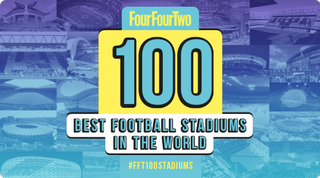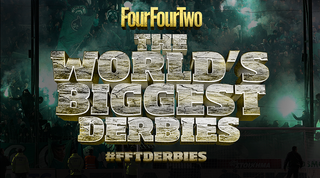FourFourTwo's 50 Biggest Derbies in the World, No.2: Barcelona vs Real Madrid
El Clasico is just kept off top spot as the biggest derby in world football...
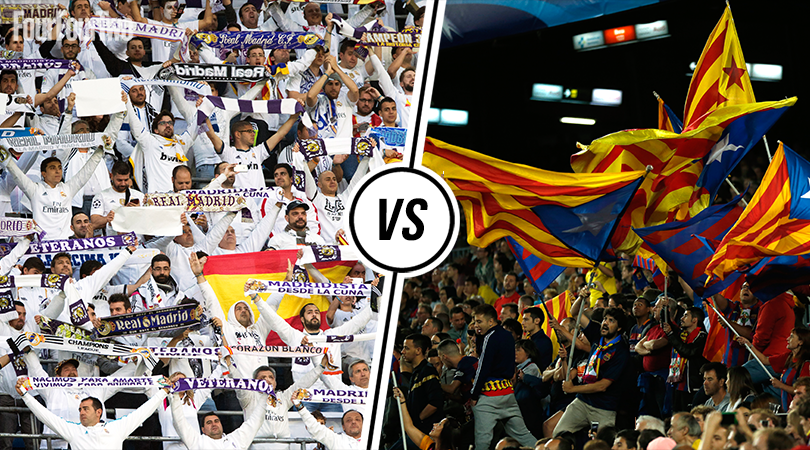
There are games between clubs, and there are games between countries. And somewhere in the middle is Barcelona vs Real Madrid.
Bobby Robson’s description sums up the beef at the heart of this rivalry: “Catalunya is a country and FC Barcelona is their army.” In fact, Catalunya is an autonomous community within Spain, and Barça’s players don’t usually take to the field in tanks, but the world-famous football team is the most visible manifestation of Catalan pride.
It always was, which presented problems when Franco would really rather everyone knuckled down as straightfroward Spaniards. Like the Basques, Catalans felt squeezed by a centralised government who sought to ban their language and culture. As it’s rarely wise to protest against a government led by a General, Real Madrid stood as a cipher for the regime, football a focus for the discontent.
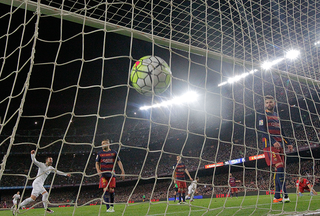
They’re also by far Spain’s biggest and best clubs, winning 58 (Madrid 33, Barcelona 25) of the 87 national league titles. That duopoly is constantly reinforced by the imbalanced structure of TV deals, which matters when every game between the two clubs is watched by an estimated half-billion global audience. It’s arguably the planet’s most eagerly-awaited and widely-devoured fixture.
It helps when the teams involved have such a fantastic array of players. Indeed, this fixture has had probably the finest dramatis personae in football’s storied history. Recent history has served up BBC vs MSN – Madrid’s Bale, Benzema and Cristiano (Ronaldo) against Barça’s Messi, Suarez & Neymar – who followed Maradona, Cruyff, Di Stefano and Zidane on down.
Enemies from the off
But back to the history – you’re never, ever far from history with this fixture. Madrid Football Club formed in 1902 and gained royal (hence Real) patronage in 1920, proudly wearing a crown atop its badge ever since.
Get FourFourTwo Newsletter
The best features, fun and footballing quizzes, straight to your inbox every week.
Founded in 1899 by a mix of Swiss, English and Catalan enthusiasts, FC Barcelona has always mixed an internationalism with a fiercely proud Catalanisme. That didn’t sit well with Francisco Franco, who led the coup d’etat that started the Spanish Civil War and set about neutering separatist opposition. Football teams weren’t excluded – hence Bilbao’s anglicised Athletic being forcibly renamed Atletico.
One notable occasion on which Barcelona felt the wrath came in 1943. Having won the home leg of a cup clash against Madrid 3-0, they were visited before the second leg by Franco’s director of state security, who was keen to point out that they were only able to play – or walk, or breathe, if it came to it – due to the generosity of the regime.
Madrid won the second leg 11-1.
The man who made Madrid
Franco’s goons helped, even if he’d rather have backed the former air force side Atletico Aviacion (later Atletico Madrid), but it was another midcentury man who made Madrid the modern monolith. Immortalised in their stadium name, he was Santiago Bernabeu.
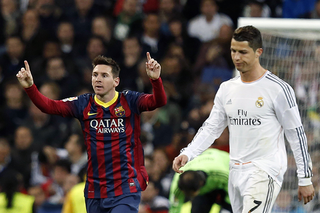
Streamlining and updating all club activities, in the decade after becoming Madrid’s president in 1944 he set the foundations for the clubs’ emphatic start to continental competition. It helped that he had the best players, and that he could get help to get the best players.
When Barcelona agreed a deal to sign Argentine genius Alfredo Di Stefano in 1953, he pulled in a few favours – he’d fought for Franco in the Civil War – and suddenly a law appeared banning foreign players. And was then moderated a little. Long story short, he signed for Real Madrid and led them to the first five European Cups.
More football than political?
Franco is long dead and Catalans are once again free to speak and write as they choose, but the schism remains and is reinforced by those who cross the great divide. There have been more than you might think – almost three dozen, including Luis Enrique, Bernd Schuster, Michael Laudrup and (the Brazilian) Ronaldo.
But they tend to be itinerant international players and don’t often switch directly between the two clubs. Enrique was the last to swap Madrid for Barça, in 1996, while four years later Luis Figo became the most recent traveller in the opposite direction. Famously, upon his return to Camp Nou, the corner-taker was showered in objects including coins, lighters, a whisky bottle and a pig’s head.
BIG INTERVIEW Luis Figo – "Barça weren't treating me properly – it was too late when they did, so I joined Real Madrid"
When Figo left Madrid were in the ascendancy. Barça remodelled, re-emphasised their longstanding academy, and reestablished themselves somewhere near the very top of the tree. How long they stay there will depend in part on the response from the capital, because these two clubs never operate in isolation.
READ THIS: More Than A Game: Barcelona vs Real Madrid
FFT's 50 Biggest Derbies in the World: 50-41 • 40-31 • 30-21 • 20-11 • 10 • 9 • 8 • 7 • 6 • 5 • 4 • 3 • 2 • 1
#FFTderbies The 50 Biggest Derbies in the World: list and features here
Gary Parkinson is a freelance writer, editor, trainer, muso, singer, actor and coach. He spent 14 years at FourFourTwo as the Global Digital Editor and continues to regularly contribute to the magazine and website, including major features on Euro 96, Subbuteo, Robert Maxwell and the inside story of Liverpool's 1990 title win. He is also a Bolton Wanderers fan.
